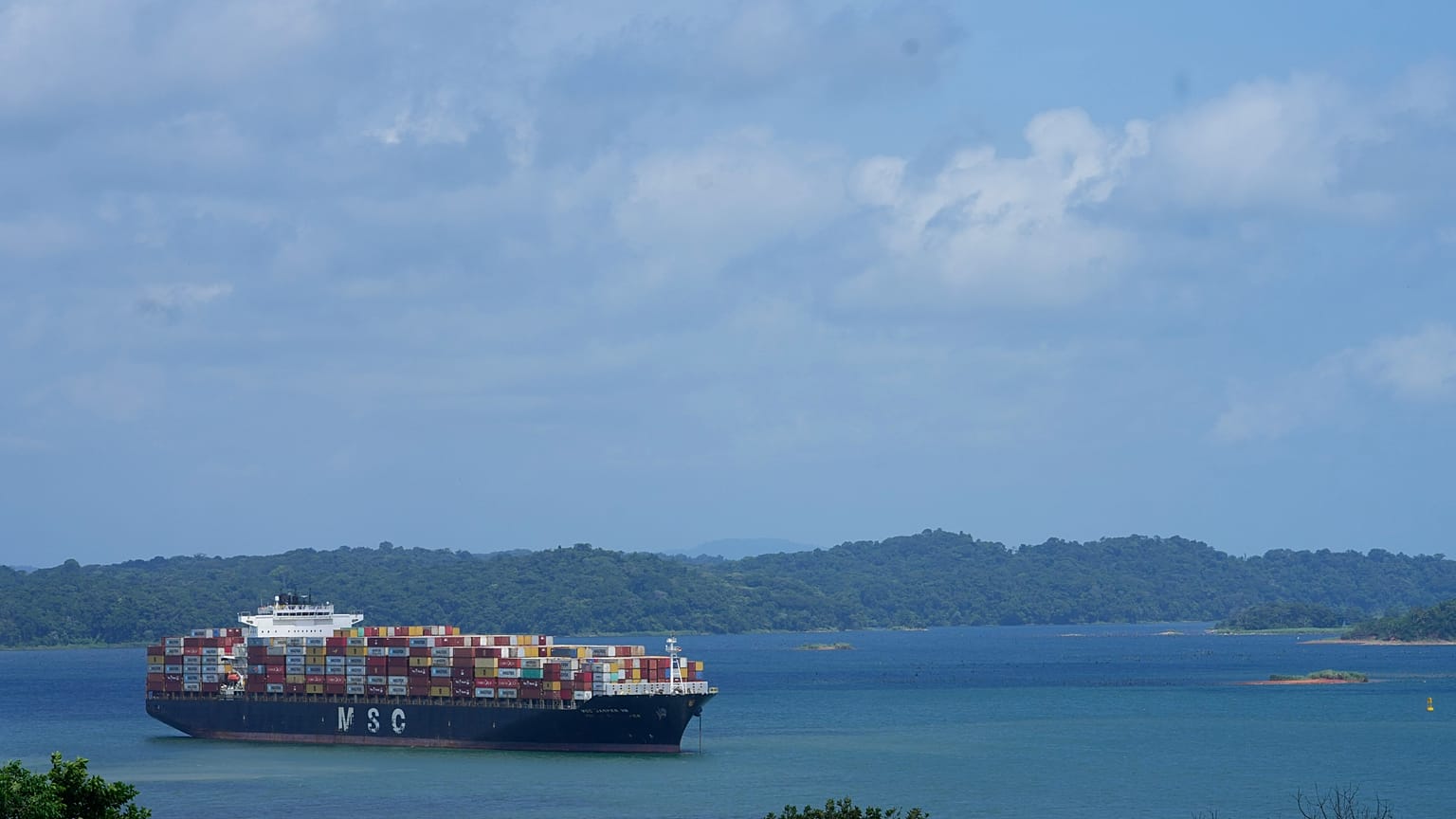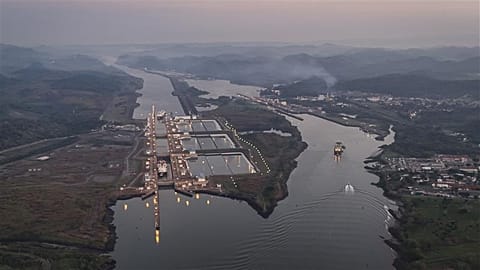The Panama Canal depends on rainwater to move vessels through a series of locks connecting the Atlantic and Pacific oceans.
The Panama Canal, an 82-kilometre waterway constructed to allow ships to pass between the Atlantic and Pacific oceans, is under pressure from climate change.
Severe drought has caused water levels to drop, forcing authorities to restrict how many ships can use the canal.
This has resulted in a major loss of income for the canal, considered one of the seven wonders of the modern world.
Canal administrator Ricaurte Vasquez said it was necessary to adapt to the situation or “we are going to die.”
Panama Canal suffers from drought
The Panama Canal depends on rainwater to move vessels through a series of locks connecting the Atlantic and Pacific oceans.
But a lack of rainfall has caused water levels to drop so significantly that it is disrupting traffic.
The El Nino warming phenomenon is exacerbating the drought, meteorologists say.
"The big disadvantage that the Panama Canal has as a maritime route is that we operate with freshwater, while others use seawater," Vasquez said during a presentation to the media.
"We have to find other solutions to remain a relevant route for international trade. If we don't adapt, we are going to die."
Around 6 per cent of all global maritime commerce relies on the byway, according to Vasquez.
The route was constructed in 1914 and was one of the largest and most difficult engineering projects ever undertaken.
It saves ships making the lengthy and hazardous journey around the tip of South America and around 900,000 vessels have passed through it since opening.
Panama Canal restricts traffic for another 10 months
The low water levels have forced operators to cap the number of ships passing through the canal.
In 2022, an average of 40 ships passed through the canal each day. This has been lowered to 32 to save water. Each vessel requires 200 million litres of freshwater to move through the canal’s locks.
A maximum draft - which refers to how deep vessels sit in the water - has also been set at 13.11 metres.
The limits on daily vessel transit and draft are set to continue for another 10 months, officials announced this week.
This is a critical period as arrivals increase in the lead up to Christmas.
"We’re getting to December, holidays are coming, and all the goods for Christmas are being delivered,” the canal’s deputy administrator Ilya Espino told Reuters.
“Some clients approached us because winter in Asia is coming, and the energy products will start to raise the traffic again. They are a bit worried about the lines.”
The restrictions have caused a backlog of ships and are likely to result in a $200 million (€185 million) drop in earnings in 2024 compared to this year, Vasquez said.
Operators fear shipping companies will start opting for alternative routes if the restrictions continue to cause disruption.
One alternative is the Strait of Magellan, a natural passage at the tip of South America between the mainland and the Tierra del Fuego archipelago.
"We think that if we find a solution relatively soon, not necessarily an immediate solution but one customers know is on the way, it should alleviate long-term concern," said Vasquez.
Watch the video above to learn more.


















